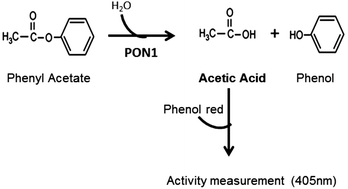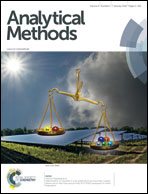Quantification of the arylesterase activity of paraoxonase-1 in human blood
Abstract
Paraoxonase-1 (PON1) is known as a free-radical scavenging system associated with circulating serum high-density lipoprotein (HDL). PON1 catalyzes the hydrolysis of multiple compounds such as arylesters, lactones and hydroperoxides. The arylesterase (AREase) activity of PON1 is involved in the detoxification of lipid peroxides, which are related to several clinical conditions. Therefore, the possibility of measuring the AREase activity in routine clinical studies would be advantageous. The AREase activity was obtained by monitoring the formation of acetic acid, upon the hydrolysis of phenyl acetate, using 10 μL of sample. The method accuracy was higher than 90% and intra-assay and inter-assay precisions were 96% and 95%, respectively. The method validation supported that this analytical procedure is suitable for use in human serum and heparinized plasma samples, while ethylenediaminetetra-acetic acid (EDTA)-containing samples should be avoided. The methodology herein described constitutes an easy, fast and reliable method for assessing the AREase activity of PON1. This method can be easily implemented as a clinical analytical tool and is also suitable for research purposes.


 Please wait while we load your content...
Please wait while we load your content...